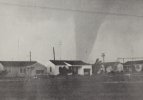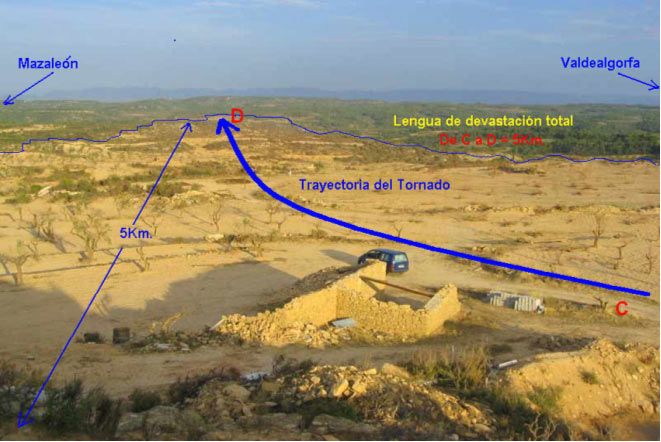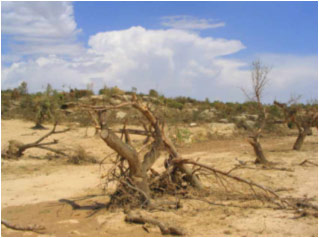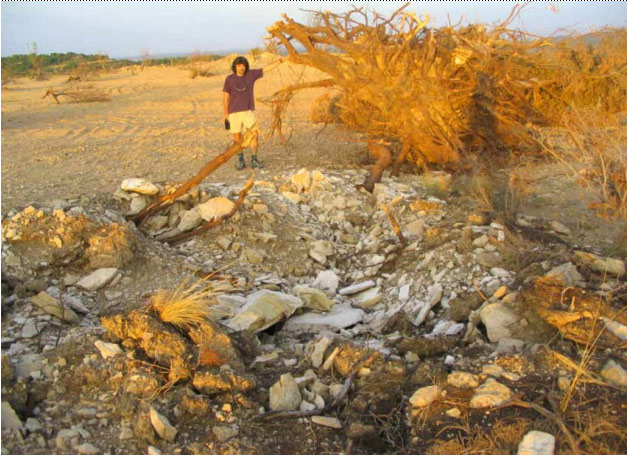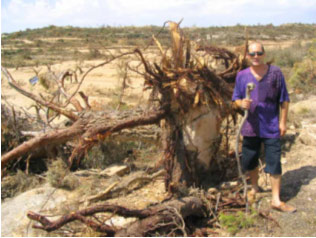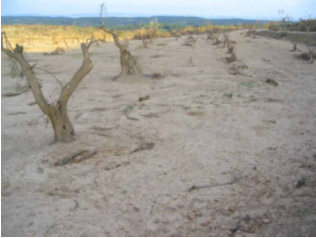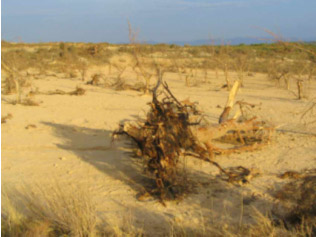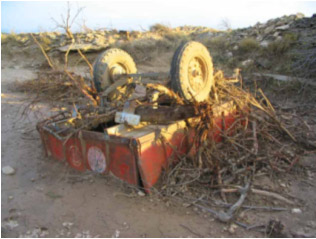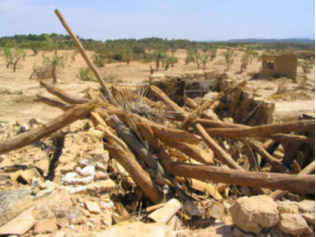Today's the 63rd anniversary of one of the most unique cases of violent tornadogenesis in Plains history. From a photo standpoint, the El Dorado, Kansas Tornado of June 10th, 1958 appeared to be like any other Plains tornado, tall, photogenic, and slow-moving. However, the truth behind the formation of this tornado definitely sets it apart from any other Plains Tornado.
Most severe weather events in the Great Plains (Texas, Oklahoma, Kansas) will occur in the month of May. The further the year goes on, the further north the low-pressure systems that produce some of the most famous tornado outbreaks go. In simple words, as it transitions from May to June, tornadoes tend to move further north. Major tornadoes in June - August in the Great Plains region tend to occur from small low-pressure systems, a low-pressure system so large that it generates a massive tornado outbreak or a "mesoscale accident," the term used when a factor in the environment that isn't easily forecasted ahead of time plays a significant part in the formation of a tornado. The third option, the "mesoscale accident" was the main driver behind June 10th, 1958.
In 1958, meteorology was nowhere near as advanced as it is today. Back then, we didn't have the NEXRAD WSR-88 type radars we see today. Only primitive technology capable of making out a blurry reflectivity map was in existence. Given the fact that not all tornado-producing storms exhibit a hook echo, mesoscale tornado forecasting back then was not easy. However, one crucial piece of data that did exist on June 10th, 1958 was the sounding. June severe weather events in the Plains always tend to have massive instability values, but usually don't have the kinematic support needed for major tornado events, which is usually seen in May. Reanalysis data for Fort Smith, AR on June 10th, 1958, a city within the brunt of the warm sector showed a multitude of problems that would preclude the formation of a tornado, however.
The observed sounding from Fort Smith on June 10th, 1958:
View attachment 9831
First, beginning at approximately 770 Mb is a massive temperature spread. Such a spread is detrimental to the vertical stretching that is essential for the formation of tornadoes, especially in the Plains when kinematic support is not as strong. A spread as large as the one seen on that sounding would surely be detrimental to tornado formation. Next, there is a minor cap above the inversion, which is also not supportive of supercell formation. Any supercell that would form in this type of environment would only be capable of producing hail and winds, given the massive temperature spread and elevated nature.
However, despite such an unfavorable environment, there is a factor that can overcome these setbacks. It's called the warm front. First, moisture is almost always higher and more pronounced along the warm front than anywhere else in the main warm sector in the Plains. This would help to decrease the temperature spread to potentially a level conducive enough for surface-based activity, and as a result conducive for tornadoes. Next, the lower-level winds are always more backed along the warm front. This would help to increase streamwise vorticity in the environment, and as a result, make it more favorable for the formation of a tornado. This was most likely the case on June 10th, 1958, using evidence from photos of the parent supercell and the El Dorado Tornado itself.
A photograph of the El Dorado Tornado taking aim at the doomed town:
View attachment 9832
The first thing that you noticed in this photo of the El Dorado Tornado is how high-based it was. However, it's obvious that the parent supercell was surface-based, knowing that it was producing a mesocyclonic F4 Tornado (photos of the tornado forming also prove that it was indeed produced by a mesocyclone). Reanalysis data showed that any supercell would have quite a high base, which is consistent with this photo of the tornado. It's clear that the base of the parent supercell was most definitely below 700 Mb, likely around 850. If the base was around 700 Mb, it would not be visible in this photo at all. The estimate of 850 Mb is realistic because when looking at similarily tall tornadoes (Rozel, June 9, 1971), reanalysis and observed sounding data for those pointed to an LCL height of 850 Mb. Thus, the moisture was able to reduce the temperature spread to a value supportive of tornado formation. Since the base of the supercell is still high, it is also evident that there was still some form of a temperature - dewpoint spread present, just not significant enough to prevent tornadogenesis.
Next, in order to break down what modern-day radar likely would have seen and what the wind shear values looked like, crucial evidence comes from the track of the tornado itself. The tornado traveled in a straight, uniformed track and remained in a steady state until it began to rope out while it was hitting El Dorado. Along the warm front, it is common to see several supercells fire and activity grow upscale quickly. Supercells do not have a big-time window to produce tornadoes in these environments, and often end up not doing so. However, we have clear and very important evidence that a violent F4 tornado was produced. The supercell responsible for the tornado most definitely remained isolated along the warm front just long enough to produce the tornado. Now that we know how the tornado formed, how did it dissipate? Well, given what we usually see today with warm front supercell activity and the sudden weakening and end of the tornado, convective interference with the tornado's inflow was likely the culprit. As convective mergers occurred, the line likely grew upscale into a major wind and hail producer. This is further supported by the fact that no other tornadoes were reported anywhere nearby that day.
In conclusion, the El Dorado Tornado was produced by a supercell thunderstorm that fired along the warm front and quickly benefitted from enhanced conditions along it in order to produce the tornado. The tornado reached F4 intensity and continued in a steady manner until it dissipated due to convective interference from the formation of other cells along the warm front. However, the convective interference did not arrive quickly enough to spare El Dorado. Evidence left behind from the tornado's damage suggests that it most definitely was a violent (F4+) tornado as well. Several homes were swept away and wind-rowed along the tornado's track. Trees were also severely debarked as well.




